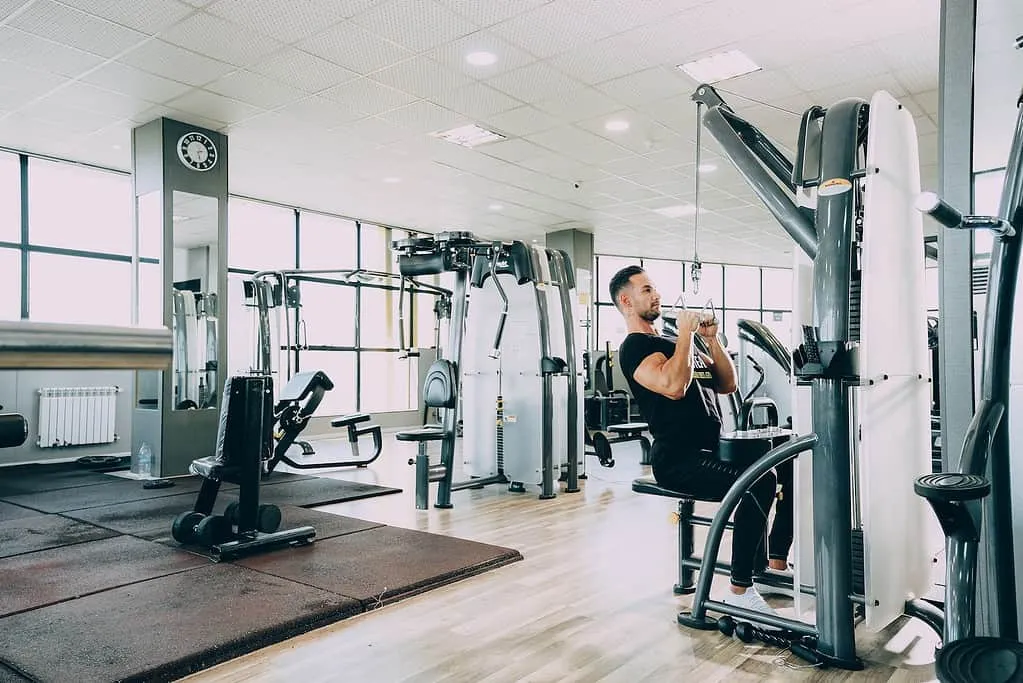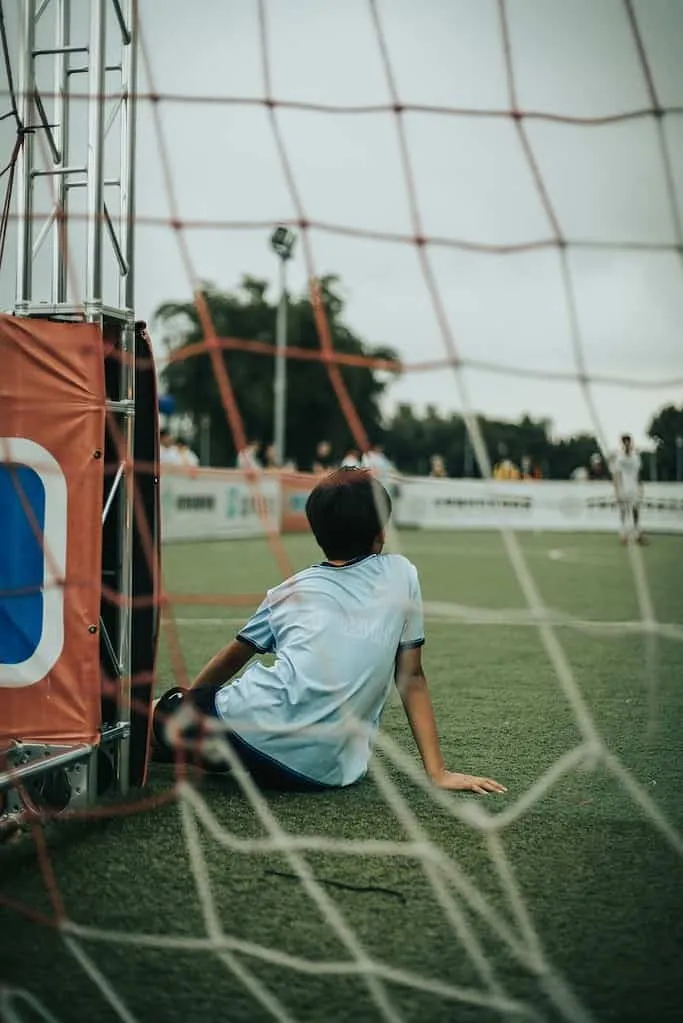As a soccer player, the question of “How to improve stamina for soccer?” can become crucial, especially when you find yourself in the high-pressure, final moments of a tied match.
You see the perfect opportunity to score – the ball is at your feet, the goal is within reach.
But fatigue strikes hard, turning your legs heavy and leaving you struggling for air on the sidelines, rather than seizing the golden chance to change the game’s outcome.

The importance of increase stamina extends across all sports, but it takes on a heightened significance in soccer games due to the continuous, physically intensive nature of the game.
An optimal level of stamina can mean the difference between keeping up with the pace and intensity of the game or lagging behind.
In fact, it can often tip the scales between victory and defeat. So, let’s lace up and delve into strategies to improve your stamina and raising your fitness levels.
Understanding Soccer Stamina
First things first, let’s understand what we mean by soccer stamina and endurance. Simply put, soccer stamina is the ability to maintain physical and mental effort throughout the entire 90-minute match.
It involves maintaining your speed, agility, and concentration levels, all while being continuously engaged in the game.
A high stamina level enables a player to perform at their best, from the first whistle to the last.
It’s essential to recognize that there are two types of stamina: aerobic and anaerobic. Aerobic stamina is about how efficiently your body uses oxygen, primarily for longer, slower-paced activities.

In soccer, this comes into play when you’re moving around the pitch without any high-intensity sprints or tackles.
On the other hand, anaerobic stamina is what your body taps into for short, intense bouts of activity, such as when sprinting or making a swift, explosive leap to head the ball.
Stamina is a multi-faceted concept. It’s not just about your cardio and lungs; it also involves muscle strength and mental endurance.
Cardiovascular endurance enables you to maintain your running speed, while muscular endurance helps prevent fatigue in specific muscle groups, such as your legs.
Moreover, mental toughness allows you to stay focused, make quick decisions, and cope with the pressure that comes with competitive play.

Soccer stamina provides a consistent performance base.
With good stamina, you can keep your decision-making sharp and skill execution precise even in the closing stages of a match, while others might be flagging.
It ensures that you can still make those crucial, game-winning moves even after running for 80+ minutes. Thus, building stamina should be a vital part of any soccer player’s training regime.
Why Improve Stamina Matters in Soccer
Stamina is not just about enduring the game; it also influences many critical aspects of soccer.
For instance, maintaining your running speed is a significant advantage when trying to outpace an opponent or chase down a ball.
Stamina also helps you sustain your skill performance. When fatigued, your shooting, passing, and dribbling accuracy may deteriorate, affecting your overall game.
Additionally, stamina plays a significant role in injury prevention. When you’re exhausted, you’re more likely to execute movements poorly or fall, leading to potential injuries.
Therefore, building stamina could mean the difference between spending time on the field or on the sidelines.
To understand the role stamina plays in soccer, consider professional players like N’Golo Kanté or James Milner.
These players are renowned for their incredible stamina and consistent performances throughout matches.
Kanté, for example, is known for his endless running and ability to cover a large part of the pitch, often being in the right place at the right time due to his superb stamina.
James Milner, despite his age, consistently ranks among the top performers in distance covered during games.
Their stamina contributes significantly to their success and underlines the importance of this trait in soccer.
Tips and Strategies to Increase Stamina for Soccer
Interval Training: One of the most effective methods for enhancing soccer stamina is interval training. This training involves alternating between high-intensity and low-intensity periods, closely mimicking the pace of a soccer match.
By pushing your body to perform under high-intensity conditions, recovering, and repeating, you enhance your body’s ability to handle increased demands, thereby improving both your aerobic and anaerobic stamina.

Endurance Training: Endurance training, such as long-distance running or cycling, can also be beneficial for soccer stamina.
It primarily enhances your aerobic stamina, allowing you to maintain a steady performance level over extended periods. Start with shorter distances and gradually increase as your endurance improves.
Strength Training: While often overlooked when it comes to stamina, strength training plays a crucial role.
By improving the strength of your muscles, you can delay the onset of fatigue, enabling you to maintain your performance for longer.
Include exercises that work your entire body, with a focus on your leg muscles.
Nutrition and Hydration: Proper nutrition provides the fuel your body needs to train and perform, while hydration keeps everything functioning optimally.
Prioritize complex carbohydrates for sustained energy, lean proteins for muscle recovery and growth, and plenty of fruits and vegetables for overall health.
Drink enough water before, during, and after training and games to stay hydrated.
Adequate Rest and Recovery: Improving stamina isn’t just about pushing yourself during training; it’s also about allowing your body to recover.
Ensure you get enough sleep each night, and don’t forget to incorporate rest days into your training schedule. These measures allow your body to repair and strengthen itself.
Mental Strength Training: Stamina isn’t only a physical challenge; it’s a mental one, too. Mental toughness helps you push past your perceived limits.
Incorporate techniques such as meditation, visualization, and positive self-talk into your routine to boost your mental stamina.
Implementing Stamina Training Exercises into Your Routine
With all these strategies and exercises in mind, it’s essential to understand how to fit them into your regular soccer endurance training program without causing overload or burnout.
Your training routine should be a balanced mix of soccer-specific training, aerobic exercise, stamina-enhancing workouts, strength sessions, and rest periods.
One way to do this might be to dedicate specific days to stamina training to help you improve, such as interval jogs and endurance workouts, on non-match days.
It’s crucial to start slow and gradually increase the intensity of your stamina exercises. If you’re new to stamina training, it’s easy to overdo it and risk injury.

Instead, focus on creating a solid base of fitness first, then incrementally ramp up the intensity and duration of your workouts. Remember, improving stamina is a marathon, not a sprint.
Consistency is key in seeing results. It’s better to train regularly at a moderate intensity than to have sporadic, high-intensity training sessions.
Likewise, patience is vital; noticeable improvements in stamina may take weeks or even months.
Don’t get disheartened if you don’t see immediate results. Keep at it, and over time, you’ll find yourself lasting longer and performing better on the soccer field.
Case Studies of Endurance Success
To better illustrate the impact of improved stamina, let’s look at a couple of examples from the world of professional soccer.

- N’Golo Kanté: Known for his extraordinary stamina, N’Golo Kanté’s energetic midfield presence is a result of his rigorous training routine.
He blends a mix of high-intensity interval training with endurance running, enabling him to maintain his energy levels throughout the entire match.
In addition, he follows a strict, balanced diet and takes proper rest to aid his recovery. His stamina-building efforts have made him one of the most consistent performers in the game. - James Milner: Despite his age, Milner continues to impress with his stamina and work rate.
He has incorporated a variety of training methods into his routine, including interval training, endurance workouts, and strength training.
His commitment to maintaining his fitness and stamina has resulted in his exceptional longevity in the game.

These players’ stamina routines have not only improved their personal performance but also greatly contributed to their teams’ success, highlighting the importance of a soccer player’s stamina.
As we’ve seen throughout this guide, soccer stamina is not simply about enduring the length of a match but playing at your best from start to finish.
From understanding the various types of stamina to diving into how to improve it through interval training, endurance workouts, strength training, and mental strength training, we have covered it all.
It’s clear that proper nutrition, hydration, and adequate rest play vital roles in maintaining and increase stamina for football.
Now that you’re equipped with the knowledge and ways to increase your stamina, it’s time to lace up your boots and get started on your journey to boost your soccer stamina. Remember, start slow, be consistent, and stay patient.
With hard work, determination, and time, you will see improvement in your game. So, let’s game on and rule the pitch!


